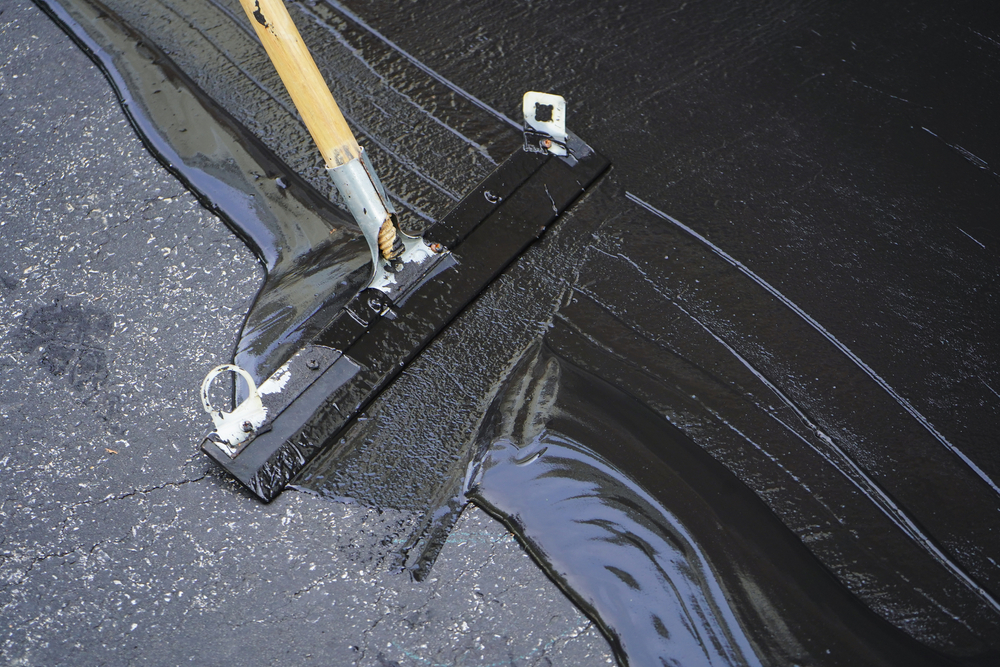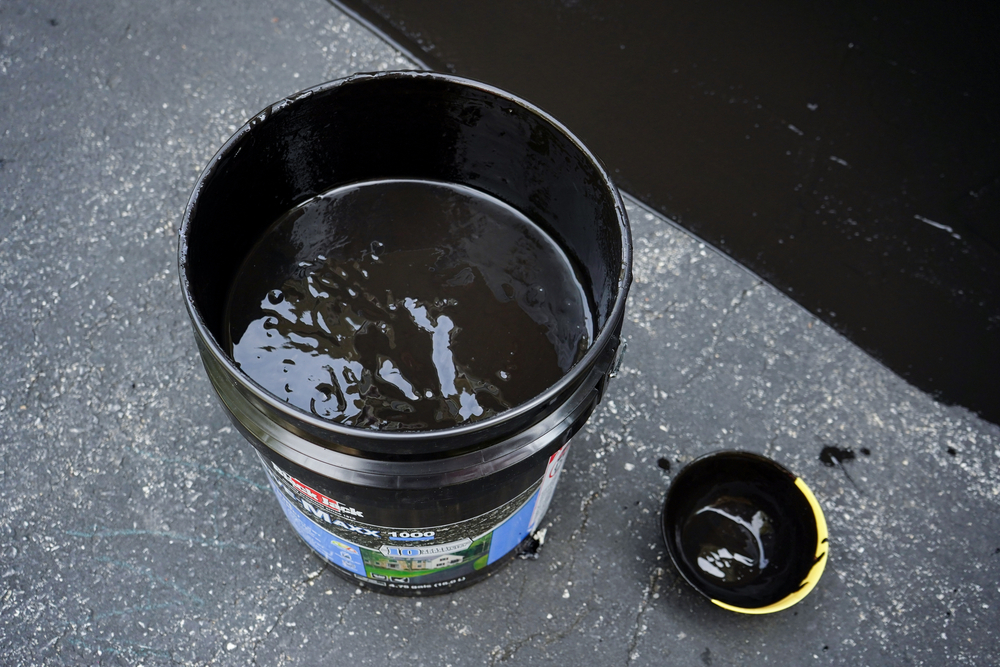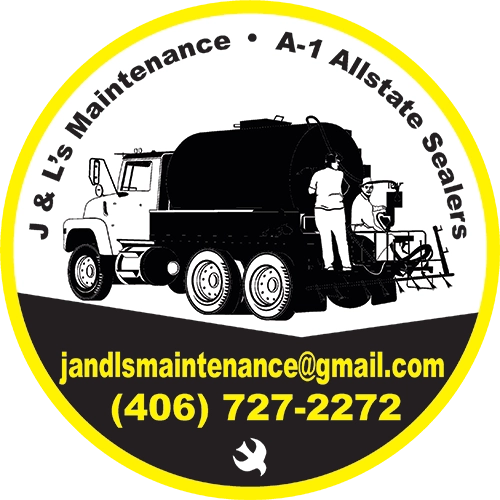
Maintaining a driveway in Montana presents unique challenges due to the state’s harsh winters, freeze-thaw cycles, and intense summer sun. For homeowners and property managers alike, understanding the best approach to asphalt maintenance and determining the optimal sealcoating schedule in Montana can significantly influence driveway longevity and overall curb appeal. Knowing how often to reseal your driveway is not just about aesthetics—it’s a fundamental component of long-term property care and cost management.
The Importance of Driveway Resealing in Montana
Montana’s climate is particularly tough on asphalt surfaces. Heavy snowfall, ice accumulation, and temperature swings can quickly degrade asphalt if not properly protected. Driveway resealing in Montana acts as a barrier against moisture, ultraviolet rays, and chemical spills. Without this protective layer, water can seep into the asphalt, leading to cracks, potholes, and structural weakening as freeze-thaw cycles take their toll.
Resealing enhances the appearance of your driveway, giving it a fresh, dark finish that boosts property value. More importantly, it slows oxidation—a process that dries out the asphalt binder, leading to brittleness and surface failure. Homeowners who prioritize timely asphalt sealcoating in Montana typically spend less on long-term repairs, as resealing prevents minor issues from evolving into expensive restoration projects.
Optimal Sealcoating Schedule in Montana’s Climate
Understanding the right sealcoating schedule in Montana is essential for maximizing driveway lifespan. In general, experts recommend resealing driveways every two to three years. However, Montana’s unique environment may call for adjustments to this timeline.
Harsh winters and hot summers cause asphalt to expand and contract more dramatically than in milder regions. This constant shifting can stress asphalt surfaces, making more frequent sealcoating advisable for some properties. If your driveway experiences heavy vehicle traffic, frequent snow plowing, or exposure to de-icing chemicals, resealing every 18 to 24 months may be ideal.
Seasonal timing is equally critical. In Montana, sealcoating should be performed between late spring and early fall, when temperatures consistently stay above 50°F. This ensures the sealant cures properly and forms a durable, protective layer. Resealing outside this window can lead to poor adhesion and reduced protection.
How to Extend Driveway Life Between Sealcoating
While sticking to a regular sealcoating schedule is key, adopting complementary maintenance strategies can help extend your driveway’s life between resealing sessions. Regular cleaning is a simple but effective way to protect asphalt. Remove debris, leaves, and dirt that can trap moisture and encourage surface deterioration. Washing away oil stains and chemical spills prevents these substances from degrading the asphalt binder.
Prompt crack sealing is another vital step. Small cracks, if left unattended, will widen as water infiltrates and freezes within them. By sealing cracks immediately, you block water entry and prevent significant structural damage.
Avoiding heavy equipment or oversized vehicles on your driveway reduces stress on the asphalt, minimizing deformation. If snow removal is necessary during Montana’s long winters, opt for a plastic shovel instead of metal to avoid scraping away the protective sealcoat.
Lastly, consider applying a high-quality driveway sealer when it’s time for resealing. Not all sealants are created equal, and choosing a premium-grade sealant tailored for cold climates can provide better protection against Montana’s severe weather conditions.
Key Asphalt Maintenance Tips for Montana Homeowners
To optimize your driveway care routine, focus on a combination of preventive and restorative asphalt maintenance tips. Annual inspections are crucial. Walk your driveway each spring to assess for cracks, fading, and signs of wear. Early detection of issues allows you to intervene before extensive damage occurs.
Avoid using rock salt and harsh de-icing chemicals that can accelerate asphalt degradation. Instead, use calcium magnesium acetate or sand to provide traction during icy conditions without compromising your sealcoat.
When planning your resealing project, preparation is just as important as the application itself. Ensure the driveway is thoroughly cleaned and free of stains, cracks are sealed, and the weather forecast indicates dry, warm days ahead. Proper surface preparation enables the sealant to bond effectively, offering maximum protection.
Scheduling resealing during optimal weather conditions not only ensures durability but also enhances safety, as freshly sealed driveways can become slippery if improperly applied during cool, humid, or rainy conditions.
Professional application is often recommended for Montana homeowners unfamiliar with DIY sealcoating. Specialists possess the equipment and expertise to deliver even, long-lasting coverage while identifying underlying issues that may need addressing before sealing.
Why Asphalt Sealcoating in Montana Pays Off
Investing in consistent asphalt sealcoating in Montana is both a financial and aesthetic decision. Although the upfront cost of sealcoating may deter some homeowners, the long-term savings are significant. A well-maintained driveway can last up to 20 years or more, compared to an unsealed surface, which might deteriorate in as little as 7 to 10 years under Montana’s harsh conditions.
Sealcoating improves your home’s curb appeal, making it more attractive to potential buyers should you decide to sell. In regions like Montana, where properties often feature long driveways, this visual enhancement can substantially affect property value perceptions.
Ultimately, the question of how often you should reseal your driveway in Montana depends on your specific circumstances. Standard guidance suggests resealing every two to three years, but high-traffic driveways, severe weather exposure, or visible surface wear may necessitate more frequent attention. By adhering to a proactive maintenance plan—combining sealcoating, crack repair, regular cleaning, and professional assessments—you can safeguard your investment and enjoy a durable, attractive driveway for years to come.
Staying vigilant with asphalt maintenance tips not only extends your driveway’s life but also minimizes costly repairs, keeping your property safe and visually appealing across Montana’s challenging seasons.
Need Asphalt Maintenance & Repair Services Near You?
Here at J&L’s Maintenance, we’re a family-owned business with over 30 years of experience proudly serving the State of Montana. Whether you need parking lot maintenance, snow plowing, or asphalt repair, we’ve got you covered with reliable and professional services. We offer free estimates and stand by the quality of our work, ensuring your project is in the best hands. Don’t hesitate—reach out to us today! We look forward to assisting you with all your asphalt needs.

Montana’s rugged beauty and dramatic seasonal swings make it an incredible place to live—but a tough one for asphalt. Long, snowy winters and rapidly changing spring weather subject driveways and roads to freeze-thaw cycles, road salt, and moisture infiltration. Summer, however, ushers in ideal conditions for repairing and preserving these essential surfaces. This is why summer is universally recognized as the prime time for sealcoating in Montana. Below, we’ll explore the reasons behind this seasonal scheduling, the role of climate, how homeowners and business owners should plan their asphalt maintenance schedule, and the long-term benefits of timely driveway care in this region.
Climate Considerations and Asphalt Vulnerability
Montana’s climate plays a central role in determining when asphalt maintenance should occur. The state experiences a wide temperature range across seasons. Winters can be brutally cold with extended snow cover, while summers are typically warm and dry—exactly the conditions sealcoating requires.
Sealcoating is a protective layer applied to asphalt surfaces, acting as a barrier against elements like UV rays, oil, water, and oxygen. It’s essential that this sealant is applied when temperatures are consistently above 50°F, and preferably higher during both day and night. The product also needs several hours, ideally a full 24-hour period, to dry and cure properly. Montana summers, with their long daylight hours, low humidity, and stable weather, offer the best environment for this process.
Attempting to apply sealcoat during colder months or rainy seasons leads to poor adhesion, uneven coverage, and reduced effectiveness. Spring and fall, while sometimes mild, are unpredictable in Montana. Rainstorms, sudden freezes, and fluctuating temperatures make it risky for effective driveway care. Summer, by contrast, provides a dependable window for optimal results.
The Lifecycle of Asphalt in Montana
Understanding the lifecycle of asphalt in Montana is key to appreciating the urgency of a well-timed maintenance strategy. Asphalt begins to deteriorate from the moment it’s installed. Sunlight oxidizes the surface, making it brittle. Water seeps into small cracks, and in winter, freezes and expands, enlarging these fissures. Over time, this leads to potholes, crumbling edges, and severe structural failures.
In Montana, the damage is amplified due to the state’s frequent freeze-thaw cycles. These cycles occur when daytime temperatures rise above freezing but drop below it at night. Moisture trapped in asphalt expands and contracts repeatedly, compromising the material’s integrity. Sealcoating in Montana during summer acts as a rejuvenating treatment that helps protect against this kind of damage.
Experts recommend a consistent asphalt maintenance schedule, with sealcoating performed every 2 to 3 years depending on traffic volume, location, and prior wear. Summer applications ensure the protective layer sets correctly, maximizing its durability and giving the surface a fresh, jet-black appearance that not only enhances curb appeal but also extends the life of the pavement.
Economic and Practical Benefits of Summer Sealcoating
From a financial standpoint, preventative maintenance is significantly more cost-effective than reactive repairs or full replacement. Driveway care that includes routine sealcoating is a minor investment compared to the major costs of re-paving. For businesses, a smooth, crack-free parking lot or entrance not only creates a good first impression but also reduces liability from trip hazards or surface failure.
Scheduling sealcoating during summer also minimizes downtime and disruption. Because the warm weather accelerates drying times, driveways and lots can be reopened for use sooner. Contractors in Montana often work extended hours in summer to accommodate as many projects as possible, taking advantage of the favorable weather. This seasonal surge in availability allows for faster scheduling and competitive pricing.
Furthermore, summer is typically when homeowners and commercial property managers are most active in property upgrades. Incorporating asphalt maintenance into broader summer improvement plans—such as landscaping, painting, or exterior construction—streamlines upkeep and makes logistical sense. It’s much easier to coordinate sealcoating when other warm-weather projects are already underway.
Planning Your Sealcoating and Maintenance Schedule
Effective driveway care in Montana requires more than just reacting to cracks or potholes as they appear. Proactive planning ensures asphalt surfaces are treated at the right intervals, before deterioration sets in. The best approach is to inspect your pavement each spring after snowmelt. Look for discoloration, fading, cracking, or pooling water. These are early signs that sealcoating may be due.
If you determine your surface is ready for sealcoating, aim to schedule your appointment early in the summer. Demand tends to spike in late summer as homeowners and businesses rush to complete work before fall. Booking early ensures you get a preferred time slot and can negotiate better rates.
Also, consider how you’ll prepare the surface. Sealcoating isn’t simply a matter of spraying on a coat. The surface must be thoroughly cleaned, any cracks filled, and all oil spots treated. In Montana’s dusty rural areas or areas with pine sap or oil spills, this prep work can be significant. Reputable contractors will handle this as part of the service, but understanding the process helps you ask the right questions and set expectations.
Lastly, follow up after the sealcoating is applied. Avoid driving or parking on the surface for at least 24 hours, and keep it clear of foot traffic, sprinklers, and debris. A properly applied and cared-for sealcoat can dramatically extend the lifespan of your pavement, making it well worth the effort.
Long-Term Impact of Seasonal Sealcoating
Montana’s residents, from the busy hubs of Billings and Missoula to the quieter towns like Lewistown or Polson, understand the value of stewardship—of land, property, and community. Maintaining asphalt surfaces through regular sealcoating in Montana reflects that same ethic of care and foresight.
When sealcoating is part of a consistent asphalt maintenance schedule, the long-term results are clear. Surfaces last longer, look better, and require fewer repairs. For residential homeowners, that means protecting a major investment—the driveway—while enhancing curb appeal. For commercial property owners, it means maintaining safety, accessibility, and a polished professional image.
But beyond aesthetics and costs, there’s a deeper value in seasonal upkeep. In Montana, where weather extremes are part of daily life, embracing a rhythm that works with, not against, the environment is key. Summer gives you the tools to protect your property from the harsh months ahead. When winter storms roll in, you’ll rest easier knowing your driveway or parking lot is shielded by a durable, weather-resistant sealcoat.
Conclusion
If you live or work in Montana, don’t wait for cracks to widen or potholes to appear. Summer is the time to act. It’s the perfect season for sealcoating because the conditions align, the timing is right, and the long-term benefits are too significant to ignore. Embrace the summer sun not just for recreation, but for the essential task of asphalt preservation. Your pavement will thank you.
Need Asphalt Maintenance & Repair Services Near You?
Here at J&L’s Maintenance, we’re a family-owned business with over 30 years of experience proudly serving the State of Montana. Whether you need parking lot maintenance, snow plowing, or asphalt repair, we’ve got you covered with reliable and professional services. We offer free estimates and stand by the quality of our work, ensuring your project is in the best hands. Don’t hesitate—reach out to us today! We look forward to assisting you with all your asphalt needs.


